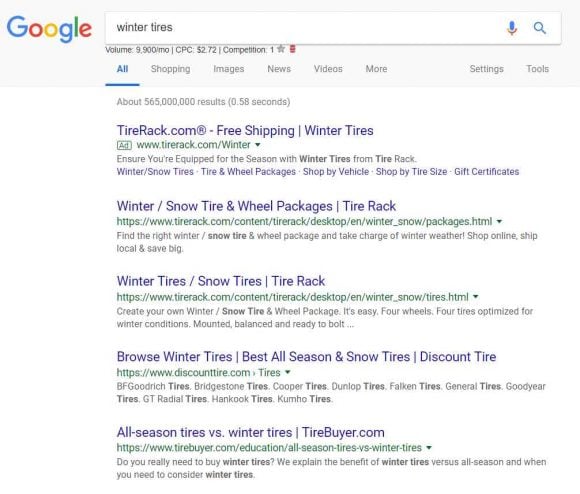How “Boring Companies” Can Get More Eyes on Their Blog

Let’s be honest, creativity is one of the most versatile and powerful resources in the universe. It is the origin of all innovation and is one of the few remaining things that machines can’t fully mimic.
From a marketing perspective, creativity has the power to do amazing things. It can transform even the most boring products, services, and companies into something noteworthy and make brands stand above the pack. Take Old Spice for example. The famous deodorant brand spent decades fading into obscurity until they took a drastic new creative direction in 2008. Since then, they have become renowned for their outside-the-box (and honestly quite bizarre) ads and messaging.
Now, as a professional blogger, you likely write for an array of clients. Some probably come from fun industries, while many others do not. When it comes to giving your client(s) that unique spark, it all starts on the website. More specifically, in the blog section. The blog section is where companies get to solidify a voice, personality, authority, and trust.
Businesses across all industries know how important blogging is for establishing niche expertise, improving SEO, etc. However, it can be tough to come up with awesome content week after week for a client in an industry that seems “boring.” Always remember, there are no “boring” industries, just boring writers. The ability to engage readers is completely dependent on your own creativity.
If you’re feeling stuck on how to spruce up a client’s blog section and get more readers tuned in, here are a handful of strategies to keep in mind.
Put Your Insights into Real World Perspective
The age-old business saying “you aren’t selling products or services; you’re selling answers to problems” could not be more relevant when it comes to blogging. A blog section is a top-of-the-sales funnel platform and people aren’t typically reading posts to get flashy deals and sales jargon thrown in their faces.
Most people look at blogs to learn something new and interesting. In order for your posts to come across as captivating, it needs to have some sort of real-world value that your target readership finds beneficial.
As a blogger, you should see yourself as a chameleon of sorts – meaning you have the research capabilities to pick up on industry lingo and blend into any field of expertise. However, when you write top-of-the-funnel content, you need to go easy on the fancy jargon and make it relatable.
Look at Southwest Airlines. Air travel isn’t exactly the most fascinating topic to the everyday person. In fact, many people would argue that flying gets worse every single time they enter an airport. Seats are getting smaller, legroom is getting scarce, prices are going up, and the list goes on. Many airlines have developed a poor reputation for how they handle customers (United, anyone?). However, the bloggers behind the scenes at Southwest have done a fantastic job of building a strong image around user friendliness and understanding. Much of this can be attributed to the blog section on their website.
They cover everything from travel tips to the latest news in air travel to discussing how Southwest gives back to the community. They even have a Southwest community page where people can interact with blog posts and branded content.
The result is that readers begin to feel a more personal attachment to the brand, which in turn, creates customer loyalty. Compared to many corporate blogs, Southwest’s does very well in terms of both views and share-ability.
Keep in mind, when you write blogs, you don’t have to be strictly promoting your clients’ products and services. Your posts can be about anything related to the industry and provide insights on a range of trending issues. The most important thing is that it has a sense of realism that the average reader (who is not an expert) can relate to.
Provide Benefits for Reading
Now, if you are just getting your client’s blog up and running, simply getting people to read the content is perhaps the hardest part. Nearly every blogger has been there: spending lots of time and effort creating posts that no one reads.
This reality can be even tougher if you are writing for an industry that is seen as boring. So, in the early stages, it can be very beneficial to entice the few readers your client has to share and promote the articles you write. There are a number of ways you can do this.
The most important piece of the puzzle here is making sure the client loves your writing. Once you have sold them on your ability, bring up some ideas to help promote the posts. This could include creating contests, giving out coupon codes or discounts to loyal readers, or anything else to provide a real reason for people to read and share your posts.
Suggest that they look at their CRM and email subscribers. Chances are, this includes a mix of current customers, partners, leads, and people interested in what they offer. Hopefully, the client plans on sending out an email blast introducing the blog section and promoting the latest post. Within the body of the email, they can discuss the details/benefits for reading/sharing.
Keep in mind, this should (ideally) not be a long-term strategy, just a way to get the ball rolling. As long as there are stellar blog posts to promote out of the gate, this can be a very effective way to gain traction early on.
Understand The Search Engines’ Role
Over 90% of online experiences start with a search engine. Simply put, every blogger needs (at the very least) a basic understanding of how SEO relates to blogging.
Search engine optimization (SEO) is constantly changing, if you don’t know how to play by the rules, very few people will even know your post exists. On the surface level, this involves conducting keyword research for each piece you write and including trending terms within the content. For example, let’s say you are writing a post for a tire store in late November about winter tires. Start with a broad focus keyword and look at the related terms. There are all kinds of tools out there to help with this. Ubersuggest is a user-friendly, browser-based keyword research tool that makes the process very easy. Let’s start with the term “winter tires” and see what comes up.
The Keywords Everywhere Chrome extension is another good tool. Upon making a Google search, it shows you a long list of related keywords and their search volumes.
With this information, you can work to naturally include some of these terms within the post for a better chance at ranking well on the search engine results pages. Now, you don’t want to only reach for the top shelf when it comes to search volume. To give you an idea, let’s enter “winter tires” into a Google search.
So, in order to rank for this broad term, you are going up against some of the top tire stores on the market. As good as your blog post might be, it likely won’t outrank these sites in a million years. You need a healthy mix of highly-searched keywords and more specific ones within your blog post to rank well.
In terms of improving your SEO value, the posts you write should be of the highest quality so other bloggers would link to it in their own posts. As you probably know, this is referred to as link building. The more relevant websites link to your posts, the more credible you look in the eyes of the search engines.
To reiterate, the search engines are constantly changing. Be sure to keep up on the latest in SEO and infuse it into your blogging plan.
Approach Controversy Once in a While
Brands are doing this all the time now. When there is a hot topic making waves, chiming in wisely can be a great way to display brand values and attract more eyes.
As you could imagine, approaching controversy is a high-risk high-reward situation. As a blogger, there needs to be a firm understanding between you and the client before you start writing. Being as how you are putting someone else’s reputation on the line, you need to tread VERY carefully. The topic you approach should have some sort of tie to your client.
If you’re writing for a “boring” industry, this is where your creativity will really need to come into action. For example, if you are writing for a toilet paper brand, you could approach the topic of deforestation. For an outdoor clothing brand, you could touch on the topic of fracking or anything else related to environmental awareness. When writing for a company that specializes in backend web development, you can try discussing a high profile data breach and the mistakes made. The list goes on.
The most important thing to remember about approaching controversy is you need to be constructive with the post. You need to support your bold statements with credible resources and keep a moderate/relatively unbiased tone as you present your expert take. Always remember, there is a fine line between adding value to a controversial topic and simply being a loudmouth. The latter can quickly land your client in hot water, and as a result, you could very well be out of a job.
Your Turn
Creating and maintaining an engaging blog section is no simple task. In most cases, it takes a long time to build up a loyal readership – regardless of the niche. In industries that many people tend to find boring, bloggers are fighting an uphill battle, unfortunately.
With a healthy dose of creativity, incentivizing, attention to SEO, and quality writing, your posts will slowly but surely start to gain traction. Remember, an industry is only as boring as you make it.
Author Bio:
Manish Dudharejia is the President and Co-Founder of E2M Solutions Inc, a San Diego Based Digital Agency that specializes in Website Design & Development and eCommerce SEO. With over 10 years of experience in the Technology and Digital Marketing industry, Manish is passionate about helping online businesses to take their branding to the next level.






